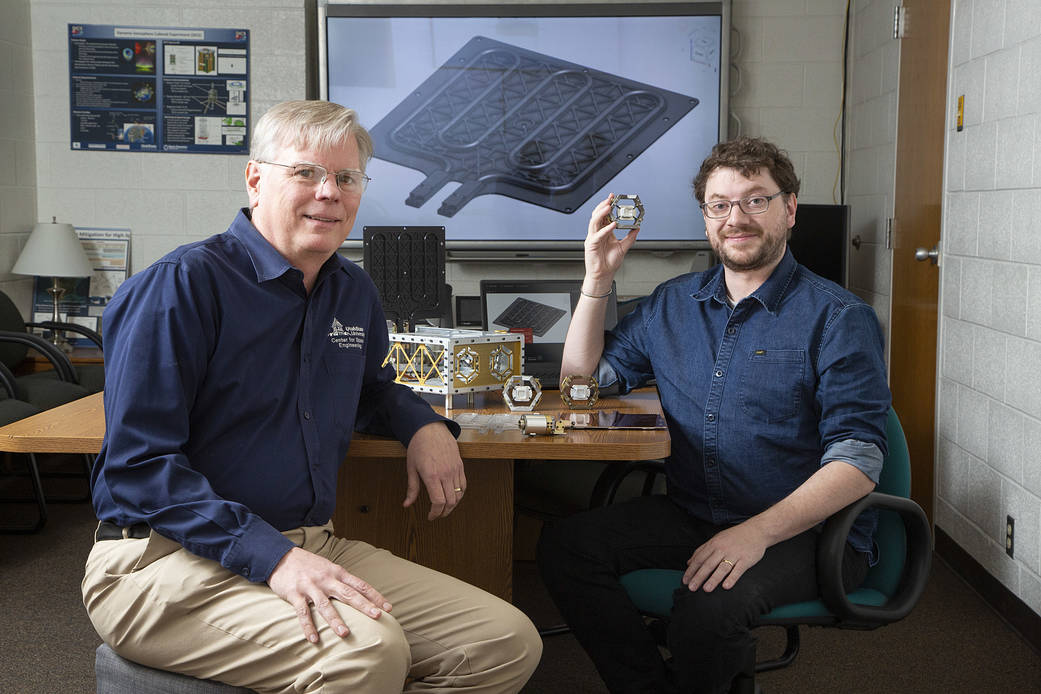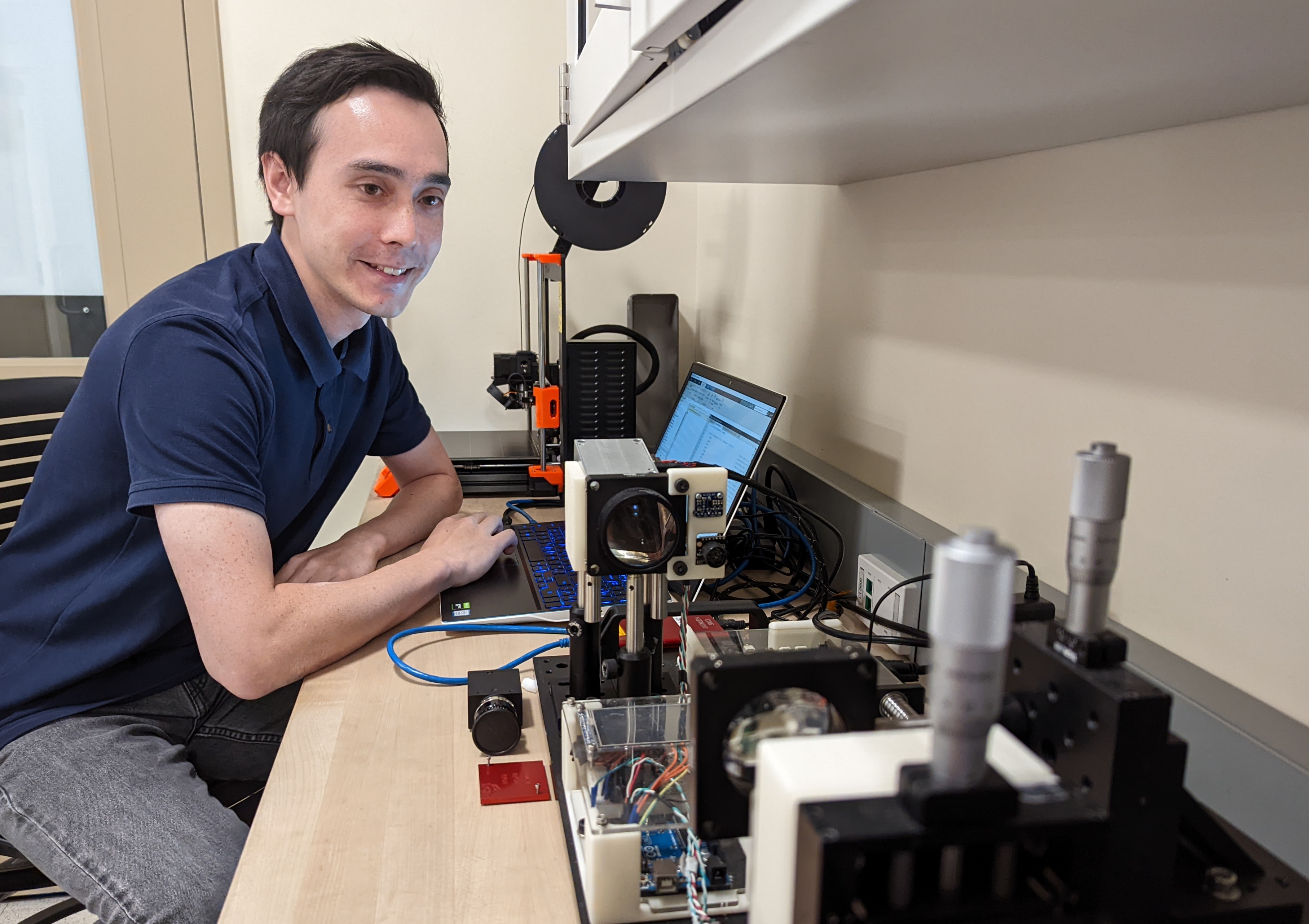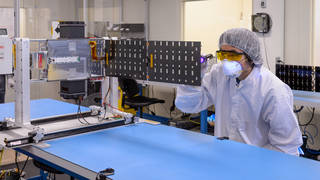
Expanding the capabilities of small spacecraft as critical platforms for research and technology demonstrations, the agency’s SmallSat Technology Partnerships (STP) initiative is funding university research with the potential to advance the small spacecraft industry and support lunar and deep space missions. Under cooperative agreements managed by NASA’s Small Spacecraft Technology (SST) program, Utah State University in Logan and Stanford University in California will test research payloads on several CubeSat missions planned for launch as early as 2022.
“We are driving innovative small spacecraft research that shows promise for widespread adoption by industry, as well as the advancement of space exploration and science goals,” said Roger Hunter, SST program manager at NASA’s Ames Research Center in California’s Silicon Valley. “This is core to our program’s mission.”
Keeping Instruments Cool
Building on earlier support from STP, Utah State University will soon test their active thermal architectures (ATA) technology in space to address the challenge of heat buildup in spacecraft. The team aims to improve the use of CubeSats for carrying cryogenic instruments into orbit for tasks like measuring the heat that collects in Earth’s upper atmosphere. Unfortunately, those instruments tend to overheat.
“Currently, we can only run cryogenic instruments in space very briefly before they get really hot, and we have to turn them off and cool them down before trying again,” said Charles Swenson, principal investigator for ATA and professor of electrical and computer engineering at Utah State University.
To address this issue, the team created a thermal control technology based on a miniaturized pumped fluid loop that transports coolant from one part of a spacecraft to another. Using 3D-printed flow channels, micropumps, and a cyro-cooler refrigeration unit, the ATA can fit in a 5 centimeter x 10 centimeter x 10 centimeter (approximately 2 inch x 4 inch x 4 inch) space inside a six-unit CubeSat. Like a radiator fluid pump in car engines, the device collects and ultimately ejects heat by pumping fluid through a radiator.
“Additive manufacturing lets us miniaturize the fluid channels, which can be embedded directly into the CubeSat frame,” noted co-investigator and Utah State doctoral student Lucas Anderson. The team also developed a miniature rotating fluid joint that uses a motor to turn and allow for the flow of fluid to the radiator. Utah State’s will be the first hardware of its kind to fly on a small satellite. The joint enables the radiator to point away from the Sun and radiate heat into deep space, enabling the instruments to operate at ideal temperatures.
The ATA project will fly as a collaborative mission with an infrared electro-optical cryogenic instrument developed with the University of Hawaii in Honolulu. Both payloads will fly on NASA’s Earth Science Technology Office’s Active Cooling for Multispectral Earth Sensors (ACMES) mission as part of NASA’s CubeSat Launch Initiative (CSLI), planned for mid-2024.
Enabling SmallSat Swarms
A Stanford University initiative with two STP awards is also planned for upcoming launch. The team is researching distributed autonomous small spacecraft technology, designed to ensure robust and accurate navigation of swarms of satellites. This has several applications in Earth and planetary science, astronomy and heliophysics, space situational awareness, and in-orbit servicing.
Low-Earth orbit satellites currently rely on global positioning system (GPS) signals to maintain orbit, but as spacecraft venture deeper into space, they go out of GPS range. Stanford has developed optical navigation algorithms that leverage imagery of a target body, planet, or vehicle so SmallSats can identify and track each other to determine their absolute orbits – the location of the spacecraft relative to a planetary body – without depending on GPS. This technique is designed to allow for swarms of small spacecraft to maintain formation and execute maneuvers. Besides autonomous navigation in deep space, the technology could help identify, track, and determine the orbits of thousands of defunct satellites orbiting Earth.
“Characterizing a piece of debris using multiple spacecraft is more accurate than what you can do with a single spacecraft,” said Simone D’Amico, Stanford associate professor of aeronautics and astronautics and principal investigator for the STP-supported technology. He compares these spacecraft clusters to a flock of birds flying in formation. Like a flock, the swarm can extend its reach and perform tasks impossible by a single entity. In the case of spacecraft swarms, that means capturing richer imaging over a larger area and from multiple directions.
Stanford’s STP-supported autonomous and distributed navigation technologies are slated for three different upcoming CubeSat swarm missions, starting with NASA’s Starling multi-CubeSat technology demonstration scheduled for launch in mid-2022. The six-month mission will use four CubeSats that will perform inter-satellite optical measurements of each other and nearby stars to estimate their absolute orbits without GPS. The other demonstrations – Virtual Super-resolution Optics with Reconfigurable Swarms (VISORS) and the Space Weather Atmospheric Reconfigurable Multiscale Experiment (SWARM-EX) – are planned for launch in late 2023 as part of NASA’s CSLI.
Stanford Ph.D. student Justin Kruger reflected, “Working on the project has been incredibly rewarding, not only in pushing the envelope for future multi-spacecraft systems, but also in getting to experience first-hand just how much teamwork goes into making a mission happen.”
Learn more about the SmallSat Technology Partnerships Initiative:
https://www.nasa.gov/directorates/spacetech/small_spacecraft/smallsat-technology-partnership-initiative/
About NASA’s Small Spacecraft Technology Program
The Small Spacecraft Technology program, part of NASA’s Space Technology Mission Directorate, expands the ability to execute unique missions through rapid development and demonstration of capabilities for small spacecraft applicable to exploration, science, and the commercial space sector. SST-funded projects may be executed at academic institutions, in the private sector, at NASA centers, as public-private partnerships, or cooperative agreements. The program office resides at NASA Ames.




























